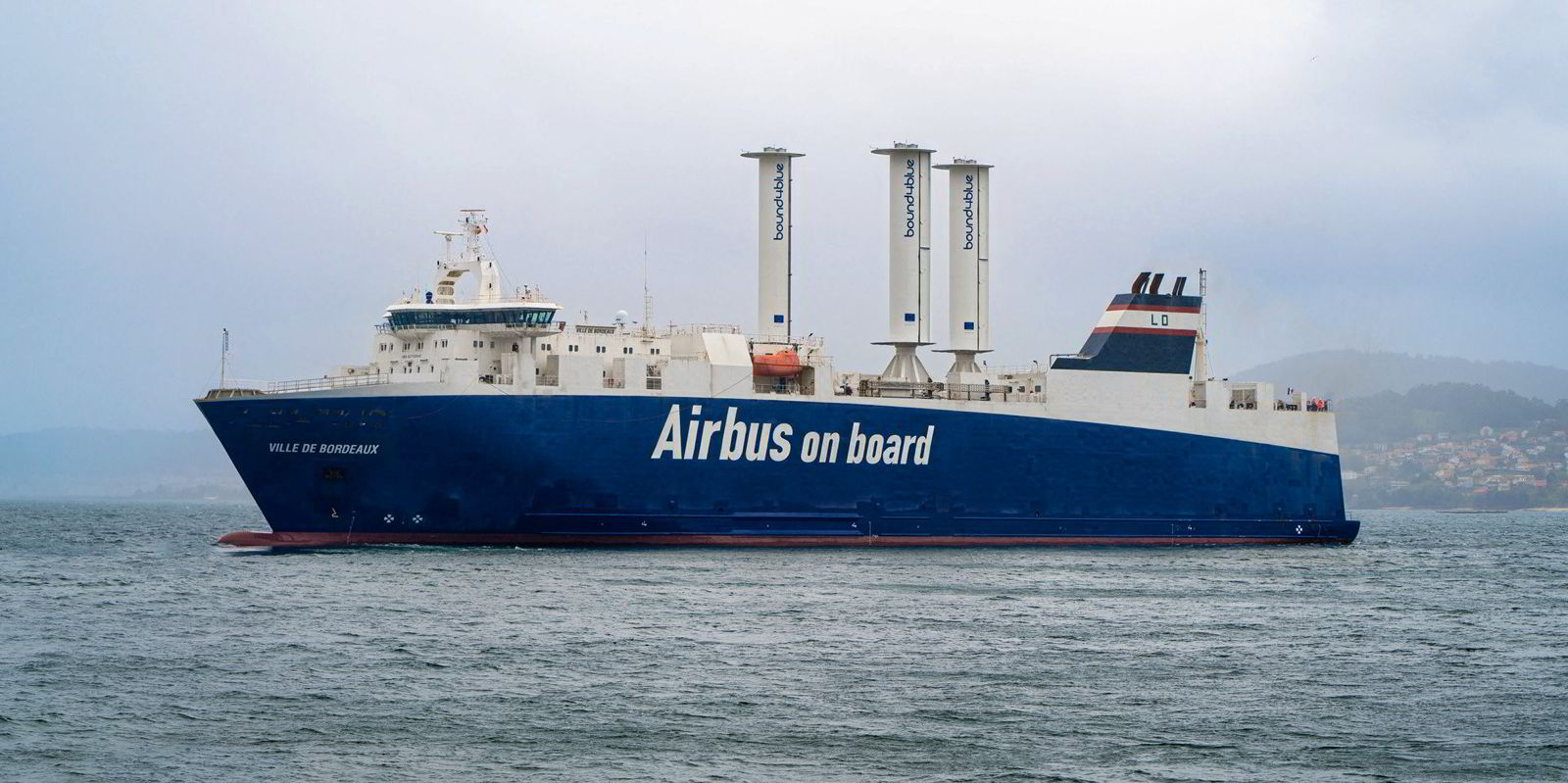Spanish windtech start-up Bound4Blue is feeling bullish after installing its suction wind propulsion system on a ro-ro vessel on charter to Airbus.
The 5,300-dwt Ville de Bordeaux (built 2004) has three 22-metre-high suction sails installed at shipbuilder Vigo in Spain following the installation of the system pedestals in Poland late last year.
The Louis Dreyfus Armateurs-owned vessel has now continued operations shuttling aeroplane parts across the Atlantic Ocean, with a reported arrival in Mobile, Alabama, on 18 March for its first voyage with the suction sails.
Mathieu Muzeau, transport and logistics general manager, said the installation helps the vessel with its goal of cutting CO2 emissions.
“The Ville de Bordeaux installation takes us one step closer to that goal,” he said.
“The sails look fantastic, and we look forward to seeing them in action. Along with our client Airbus, we’re proud to be among the first movers in this space.”
LDA announced last month that three more vessels on order in China will be built with six Flettner rotors from Finnish wind system developer Norsepower. These vessels are due for delivery in 2026 and will also be on long-term charters to Airbus.
For Bound4Blue, these three systems represent the fourth vessel for the company, and its largest yet.
“It proves that suction sails can be fitted on ships with a high weather deck and large windage area, meeting all required stability criteria,” said Bound4Blue chief technology officer David Ferrer.
Bound4Blue’s orderbook includes retrofitting systems on a further four vessels operated or owned by Wisby Tankers, Odfjell Tankers, Eastern Pacific Shipping and Marubeni subsidiary MMSL.
It also has its first newbuilding order. A single suction sail will be installed on a combined cargo and passenger vessel due for delivery in 2026 for operation in the Pacific Islands.
Wind propulsion systems, whether suction sails such as those being sold by Bound4Blue, rigid wings or rotor sails and kite systems are gaining favour with shipowners looking to reduce fuel consumption and emissions in light of European and international regulations.
The technology functions similarly to a traditional sail by creating additional thrust from the wind.
A vessel’s engines can then be operated at a more optimal or reduced load.





